Looking for an intro to the goody-good Eldar? Look no further! The first part of our Codex Review series for the Craftworlds codex begins, starting with the universal special rules and abilities available to the book. Click below to read on, or check out the Tactics Corner for more reviews and strategies.
Guide to Eldar Units (added post-facto)
HQs
- Farseer and Farseer Skyrunner
- Autarch (on foot)
- Autarch with Swooping Hawk Wings
- Autarch Skyrunner
- Warlock and Warlock Skyrunner
- Warlock Conclave and Warlock Skyrunner Conclave
- Spiritseer
- Avatar of Khaine
- Eldrad Ulthran
- Illic Nightspear
- Prince Yriel
- Asurmen
- Baharroth
- Fuegan
- Jain Zar
- Karandaras
- Maugun Ra
Troops
Elites
Fast Attack
Heavy Support
Flyers
Dedicated Transports
Lords of War
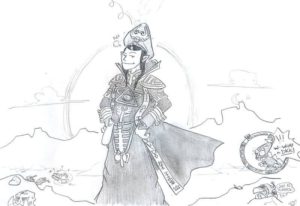
Eldar have been big dogs in the competitive scene for a long time now. Although they were largely just a spoiler army in 5th edition (or, later in the cycle, a garbage choice overall), all through 6th and 7th edition the meta was strongly influence and sometimes even dominated by Eldar armies of various stripes- from Wave Serpents to Seer Councils to Lynxes to Scat Packs to Wraithknights to D-weapons. For a long, long, time the Eldar army- and later the “Craftworlds” army, as the faction was renamed- were one of the top picks to beat, and they scored near the top at nearly every major event.
8th Edition changed all of that, though, with massive price hikes across the board in the Index and significant nerfs that put the Craftworlds among the worst possible choices- though Ynnari armies flourished briefly. However, with the release of the Craftworlds codex, a lot more options have been opened up, and while it isn’t nearly as dominant as in yesteryear, I think a lot of people are underestimating just how good Eldar can be.
Like with the other articles in our Codex Review series, we’re going to go through the units one-by-one and talk about how they function, what their roles are, what strengths and weaknesses they posses, and how you might use them on the battlefield. Although the focus will generally be on competitive play, it will not be exclusively restricted to that angle- we’ll also discuss other ways you might make use of them even if you’re not aiming to get maximum mileage out of every choice in your army. We will, however, be assuming that you are using the Matched Play rules as well as the ITC’s list-building guidelines and missions in most cases, since these are relatively standard formats across most all events and casual play in many areas.
Before we can get to the units in the book, however, we have one other thing we need to cover first: the special rules and abilities unique to the Craftworlds. Like all codices, the Craftworlds book comes with a number of unique rules that it gains for remaining “pure” (i.e. having all models from the same Craftworld in each detachment) as well as some that come standard no matter how you build your army. As understanding these rules is fundamental to understanding how the army as a whole works, we’re going to talk about the basics of them here and go over what they do for you and how you’ll likely use them; where specific units warrant additional detail, we may talk about them again in those unit entries. We’ll also briefly go over the stratagems, warlord traits, and relics available to a Craftworlds army, though these won’t be the main focus of the article; most of them will be touched on in greater detail in later parts of the series.
With all that said, let’s dig in! There’s a lot to cover here, so I won’t waste any more time.
This is the most basic of the abilities of Craftworld Eldar, and one that is often overlooked- however, while it may not be as powerful as some of the other faction abilities, it shouldn’t be completely ignored, either. Any Eldar with this ability (which excludes most of their vehicles, Wraithguys, and one or two others) can move and even advance while still shooting normally, but not with Heavy weapons. This makes Eldar a bit more mobile than even their high movement values might suggest at a first glance; typical Eldar can scoot 10″ or more per turn with a reasonable roll, and their jump pack or jetbike units can easily get 20″ or more of movement without even needing any psychic shenanigans.
However, it doesn’t mean that they can do so completely without consequence. They cannot assault when they advance (other than Howling Banshees), so melee units come in at a bit of a disadvantage overall- though many of them are still good. Also, as noted before it doesn’t affect Heavy weapons, so some of their troops will be unable to take advantage of it if they want to use their full firepower.
Battle Focus doesn’t define the faction as a whole, but it does tick off as a point that you need to remember when playing as or against them- they are a bit more mobile than they might seem, at least on their infantry and bikes.
Ancient Doom
Present on all units except for vehicles, Ancient Doom is a bit of a two-edged sword. On the one hand, it lets you reroll all misses on the first turn of a fight against Slaanesh units- but on the other hand, if you are within 3″ of any such units, you’re adding one to all morale checks. Overall the benefits generally outweigh the disadvantages, but it isn’t actually something that comes up often, as you just don’t see tons of Slaanesh units getting close to you (as they are typically a shooting army in their CSM incarnation.)
The Path of War
The standard ObSec rule all codices get- you control objective markers if any of your troops are in range, regardless of enemy presence (unless they have a similar rule, in which case they cancel out.) Since a lot of the popular Eldar troops tend to be taken in small units, this is actually a pretty useful rule- even just one Ranger or Guardian can keep an objective in line no matter how many enemies are there. The fact that most other armies will have a similar rule detracts somewhat from its utility, but it does help out a bit against “soup” armies or those relying heavily on non-Troop units.
This is where a lot of the real meat of the book starts. So long as you have a “pure” detachment of models from a single Craftworld, you gain a Craftworld attribute for that detachment which applies to all models in it- unlike some other codices, this includes vehicles of all types as well as superheavies, even when taken in an auxiliary detachment. There are five different Craftworlds you can choose from, but… well, there is actually only one Craftworld to choose, realistically speaking.
Ulthwe armies get a budget version of Fortune on all their units (which doesn’t stack with the regular one or other versions of the ability.) It’s actually just a 6+ “Feel No Pain” to negate wounds taken on your units, but that is a reasonably decent bonus to have. The big strike against it, however, is not stacking with other such bonuses- it means that an Ulthwe Avatar basically has no ability, and ditto for a Hemlock. it saves you 10pts for Spirit Stones on your other vehicles, but that is a bit less exciting than it might otherwise be. Ulthwe ends up with a C+ ability overall.
Iyanden is… weird, but not bad. Iyanden units will never lose more than one model on a failed morale check- great for larger units, but a bit less useful on small ones. It also doubles the number of wounds remaining when calculating degradation profiles on its vehicles and monsters, which can make many of them surprisingly effective even when heavily damaged. However, as Eldar mostly play the MSU game with their units, its value is somewhat lower than what it might otherwise be.
Biel-Tan is even less exciting, although it does have some broad applicability. Biel-Tan units can reroll 1s to hit with Shuriken weapons and add +1 to the leadership of any aspect warriors. Rerolling 1s is not a bad ability, even if it does only affect a relatively small subset of their units; ironically, it has its best use on units of Guardians or Windriders where you can stack up a lot of “rending” shots to put damage on a target, as most aspects have little or no shuriken weaponry. The +1 leadership bonus is largely a joke, though occasionally it will save you a casualty or whatnot. Biel-Tan, if not for some other factors, would be a bottom-tier Craftworld.
Not as bad as Saim Hann, however. Saim Hann’s benefits are not just middling in general, they also apply only to specific subsets of units for annoying fluff reasons that don’t even make a lot of sense. Saim Hann units can reroll charges- that’s not awful, but Eldar in general are not big on close combat and so getting locked in is not typically something you actually want. They also can ignore the penalty for moving with a Heavy weapon… but only with bikes, which is to say two units in the entire codex (and not great ones at that.) Saim Hann is pretty much garbage tier and you should never field them unless you are desperately fluffy and dedicated to your faction with no interest in winning games.
We’ve saved the best for last, though. There is one Craftworld that completely blows the others away, to the point where you won’t really ever have a choice to make: you take Alaitoc. Alaitoc gets the fairly-standard at this point ability of -1 to hit its units from beyond 12″; for armies like CSM or AdMech this is powerful enough, but with it applying to all units (even flyers, vehicles, etc) and several other ways to stack up penalties to hit, it becomes simply bonkers. Alaitoc is hands-down the best of the subfactions and virtually every competitive Eldar army you see is going to use them unless they have a really specific gimmick going on.
Craftworld Eldar, like most of the new codices, have access to a wide array of very powerful stratagems- so many, in fact, that I won’t attempt to go over them all here, as that constitutes an entire article by itself. There are, however, some more notable examples that we can pick out as both important to be aware of and emblematic of the set as a whole.
Cloudstrike (for vehicles) and Webway Strike (for infantry/bikers) both allow you to set up one or more units in reserve at the beginning of the game, arriving on any future turn at the standard beyond-nine-inches distance. While this may not seem terribly exciting, the fact that most other armies have no way to place units in reserve makes it inherently valuable- it means you can hide things off the table in a way that isn’t generally possible for other armies this edition. It also means that short-ranged units like Wraithguard or Fire Dragons can easily be put in position, and that melee units are able to arrive by the enemy unmolested- and if you have a Quicken available to push them right into the enemy’s face, all the better.
Forewarned, meanwhile, gives you an excellent tool against enemy reserve units. Unlike other armies’ versions, it has no range limit- when a unit appears on the board out of sequence, you can spend 2CP to take a free shot at it. The caveat, of course, is that you can only do so with a unit that is within 6″ of a Farseer; however, since you are almost always going to want to bring a Farseer, this is hardly a limitation at all. Make sure you have a few good shooting units with good lanes of fire around and you can really discourage the enemy from putting down single units in your backfield.
Lightning Fast Reactions gives you another defensive measure- it can be used when the enemy shoots at one of your units that has the Infantry or Fly keyword (which means almost everything) and grants them a -1 to hit bonus. Since this stacks with the other penalties (Alaitoc, being a flyer, camo, etc) that can make it incredibly difficult or even impossible to shoot a unit- remember, units that need a 7+ (or worse) to hit will simply miss automatically.
Finally, Fire and Fade gives Eldar back the old jump-shoot-jump and pop-up attack of years past, albeit at a cost. For a mere 1CP, one of your units gets to move 7″ after taking its shots (although it is prohibited from charging if it does so.) Why rely on penalties to hit when you can put yourself completely out of harm’s way behind a building or other piece of blocking terrain? Or maybe your unit’s guns are just a biiiiiit too short of ranged for your taste and leave you inside easy charge range for the enemy- Fire and Fade can help by backing you up to someplace safer. Don’t forget the utility, also- and extra 7″ of movement can get you onto an objective on a critical turn
Warlord Traits
Although none of the Craftworld warlord traits are obvious standouts, most of them are useful to some degree or another. An Eye on Distant Events prevents the enemy from firing Overwatch at your warlord- great for locking down a big squad before you send something else in to do the real work. Fate’s Messenger is a strictly better version of the BRB trait that grants 6+ FNP, since it also comes with a bonus wound. Falcon’s Swiftness gives you +2 movement, which is very handy for some models (like the Avatar) that are otherwise a bit sluggish. Seer of the Shifting Vector is my default choice, granting you one reroll on the warlord’s armor/hit/wound/psychic each battle round- and no one likes having their warlord be a fuckup.
I would be remiss here if I didn’t mention the Biel-Tan warlord trait in particular. Although Biel-Tan is largely a pretty mediocre Craftworld choice, their warlord trait alone buys them some redemption- each shooting phase, it allows you to pick a unit within 3″ of the character and have them reroll all misses/ That’s crazy good for a simple warlord trait, since it means you’re getting the effects of a WC7 psychic power each turn for free.
Remnants of Glory
The relics are perhaps the place where the Craftworlds are most lacking compared to other books; although there are useful tools there, for the most part they are not ones that are going to be game-changing, nor are they ones that you can build a strategy around. However, for all that neither are they particularly bad, so you won’t find yourself lamenting your choice of relic very often.
The basic choices available to all Craftworlds are where most of the good stuff is. Faolchu’s Wing grants any model the Fly keyword and a 12″ movement, which basically lets you be a budget jet pack for anyone who wants it. If you don’t wanna pay that 30pt tax to become a Skyrunner, the Wing will do nicely. The Phoenix Gem gives you a chance of resurrecting when you die by doing mortal wounds to nearby models- not only can this keep your warlord in the fight just a teensy bit longer, but in a lot of cases it can help take those last few wounds off of a stubborn enemy as well. Shard of Anaris is an upgraded power sword that rerolls failed wounds and does d3 damage- a nice weapon, though not many units can actually use it. Firesabre is pretty much strictly worse, so there’s little reason to bother. Kurnous’s Bow upgrades a Shuriken Pistol to be more deadly, but who even cares about a Shuriken Pistol?
Of the subfaction relics, there are a couple standouts: Spirit Stone of Anath’lan is specific to Biel-Tan now (another win for them, but a loss for others) and lets you reroll psychic tests- that means a potential of up to three “free” rerolls each turn for a single model. Psytronome of Iyanden doubles the attacks of nearby Wraith models, which can really let a squad of Wraithblades or a Wraithlord go full ham on something (twenty-four attacks!) The Novalance of Saim Hann has a really good profile (S5 when standing still, S8 on the charge, and does 4dmg per hit on a 6) but since you have to be Saim Hann to use it… you won’t.
And remember, Frontline Gaming sells gaming products at a discount, every day in their webcart!

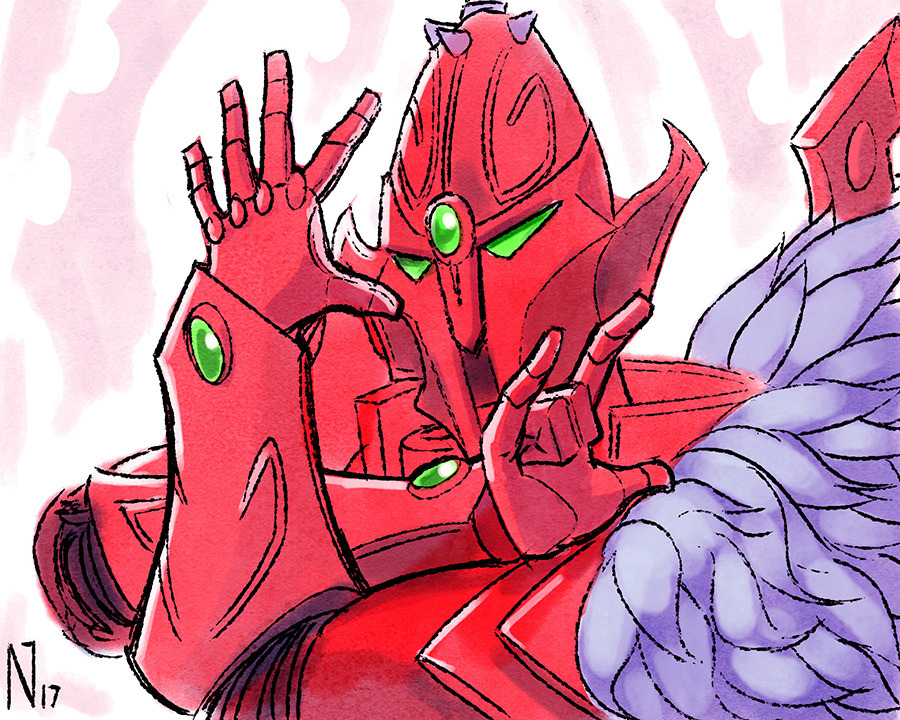
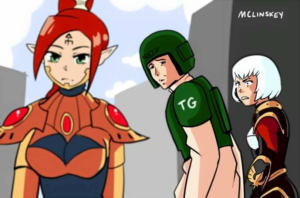
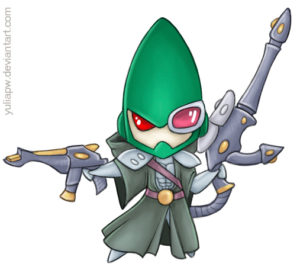
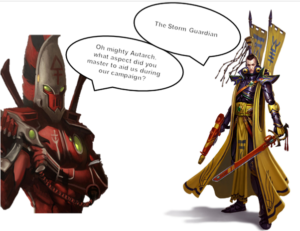


Looking forward to this series!
I think things like this show why giving negative one to hit as a trait was a terrible idea. Look across all the factions that have it; the -1 to hit trait is head and shoulders above all the rest except maybe for admech and that’s only because of Cawl. Maybe marines because of Guilliman but even there he buffs Imperium so it doesn’t really matter.
The fact that one option is the de-facto choice for competitive Play points to a huge problem with it existing
I think that assumes a shooting heavy meta, which is certainly the case now, but with Nids, Blood Angels and hopefully daemons having powerful close range that can shift. -1 to hit at 12 is always gonna be good but doesn’t do as much if your opponent is up in your face turn 1 and 2.
I think that against most armies which will have some balance of melee/ranged units it won’t be much of a problem.
But the -1 to hit seems to be disproportionately effective vs armies that can really only do shooting (AdMech, Guard, Tau). Especially since Eldar can pretty easily stack -1 penalties, which is almost certainly going to be heavily abused in the competitive scene.
If the -1 effect kicked in at longer ranges (say 18″ or 24″) it would probably be more balanced while still achieving it’s main goal of protecting those units from long-range firepower. And that would make the ravenguard/Alaitoc chapter tactics less of an auto-pick.
If ravenguard chapter tactics (and its equivalents) become the army to beat, then imperial guard armies would likely transition from cadian heavy to scion heavy.
Tyranids, at least, still tend to use a significant amount of shooting components- Biovores, Exocrines, Hive Guard, Flyrants, Dakkafexes, etc. Unless they become the premiere army of the game, to the point where IG/SM/etc shooting virtually goes away, Alaitoc and its cousins are going to stay good.
It’s worth noting, though, that for many of the other armies that come with -1 to hit (such as Raven Guard and Alpha Legion), it’s not just the trait that makes them good, but other factors as well. AL and RG would be significantly less commonly seen if they couldn’t “infiltrate” units forward, which is a major reason that they do well.
Fair point
You forgot to touch on what the Designers Commentary means for our faction. We can give Autarch’s their index weapons again and give our Autarch the Mark of the Incomparable Hunter to snipe with a Reaper Launcher!
I’ll be talking about that in the Autarch’s unit entry (as well as the entry of the various aspect warriors that are affected by it), rather than here in the general sense.
The remnants need a fix. The power sword swaps only apply to 1 HQ choice, and the shuriken pistol swaps are absurd – as if anyone cares about a pistol.. Weak choices.
Yeah I’m not thrilled with the Remnants overall. There are several good ones in there (Faolchu’s Wing, Shiftshroud, Phoenix Gem) but it feels like way too many of them are way too specific. And it’s absolutely bizarre that in faction where three of your four generic HQ options are psykers, there is absolutely nothing to enhance a psyker that isn’t Craftworld-specific.
Also apparently a shard of the sword of a god is pretty pathetic compared to a particularly fancy Imperial Guard or SoB sword. It’s really dumb, I don’t get why GW has such an aversion to aeldari characters being good in close combat. Even the legendary weapons of Prince Yriel and the Phoenix Lords are mediocre.
Yriel is hitting on 2+ re-rolling 1’s and always wounds on a 2+ at -2 D3 damage. Toss Jinx on the target and he is averaging 6.5 wounds on target v 3+/4++. 5.41 v 2+/3++.
Asurmen with the extra mortal wounds, Karandras with his no penalty power fist are all great. Even Fuegan is -4 D3 and Jain Zar is Str +2 -3 D3. That’s great.
Being able to Jinx the target and and Empower the friendly character on top of that (except Yriel who is maxed at 2+ always) makes all of them have really solid output potential.
The problem is, you can’t just assume that they will always have those buffs and debuffs around. It’s the classic Eldar mistake- “If only I cast Fortune and Will and Empower and Enhance and Conceal and Jinx and Ennervate and Drain and four Smites, my unit of Swooping Hawks can take on a Dreadnought and probably win! Swooping Hawks are great in close combat!”
It is certainly worth remembering what buffs you have available and how they affect you, but if you’re assessing how good you are in a fight, you need to do so in the absence of those enhancements.
I actually think that in almost all cases Shard of Anaris is better than Admonishing Blade or Sword of Conquest, though. Rerolling wounds is a very powerful ability, and even more so this edition.Some of the named characters’ weapons are middling, but that’s typically because they aren’t intended to be melee characters to start with.
I don’t assume those buffs will be around.
I was merely giving examples of the extra bonuses you can’t forget are also in your tool box, should you take them and position them properly.
Beside, the comment was on the weapons themselves. And they are all solid weapons that those characters carry.
Thanks for that, AP. I was getting kind of annoyed when Reece did the eldar preview articles touting how awesome everything is with all the buffs on them
Are you sure the Craftworld abilities aren’t all absolutely amazing because it is way better than having nothing?
Alright alright, I couldn’t resist a cheap shot. I’ll see myself out.
You never get something for nothing. If nothing else, you are giving up options.
Also, the ability to reroll charges with your S3 T3 5+ models is just a fancy way of committing suicide.
Re-roll charges on Shining Spears is not objectively terrible.
It is also one of the few units that has almost no interest in the Aliatoc trait – Shining Spears do not ever want to be more than 12″ away from their prey and have the mobility to get close fast.
Ooh, Panda, you sassy bitch!
Hi!,
Love you on Chapter Tactics and was just going through some of these review. Was just starting up a craftwords army (what’s the opposite of Ultramarines and Tyranids that nobody plays in my local meta? Oddly Eldar). Got 2 boxes of wake the dead and was wondering what you thought would be good choices to round out the army? For the current mixed Knight and horde meta.
Thanks